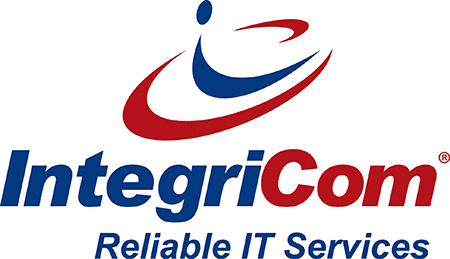Scalability in cloud computing is all about flexibility. It lets businesses adjust IT resources up or down whenever they need to, so they can handle changing workloads without sacrificing performance. If you’ve ever used an app or website during peak times and it didn’t crash or slow down, chances are scalability was working behind the scenes.
This post will break down cloud scalability in a way that’s easy to understand. We’ll cover the different types of scalability, the key differences between scalability and elasticity, the advantages of using it, and best practices to make the most of it.
Key Takeaways
- Cloud scalability lets businesses adjust resources to meet growing or shrinking demands, ensuring better performance and cost savings.
- There are three types of scalability: vertical (beefing up existing servers), horizontal (adding more servers), and diagonal (a mix of the two).
- It’s important to understand scalability (long-term resource planning) versus elasticity (real-time adjustments) to manage your cloud environment effectively.
What is Cloud Scalability?
Cloud scalability is just a fancy way of saying “adjusting IT resources to handle more work.” With cloud computing, businesses can quickly add more resources if demand spikes or scale back when things calm down, all without interruptions. The magic happens thanks to the cloud’s design, which uses virtualization and dynamic resource allocation.
For example, think about a company ramping up resources during the Black Friday sales rush. Services like AWS make this easy with features that automatically boost capacity to handle traffic surges. The result? Faster operations, a smooth customer experience, and resources that match your needs, not a penny wasted on extras.
By building a scalable cloud environment, businesses can adapt to growth or changing demands effortlessly. It’s like having the ability to instantly expand your toolbox when taking on a bigger project.
Why Does Scalability Matter?
For one, it saves money. Businesses only use and pay for what they need. It also eliminates the hassle of overloading servers or applications when demand spikes suddenly. And beyond crunching numbers, scalability helps with agility, making it much easier to adjust to market shifts or launch new products without worrying about IT bottlenecks.
Types of Cloud Scalability

Cloud scalability comes in three main flavors:
- Vertical Scaling (Scaling Up)
- Horizontal Scaling (Scaling Out)
- Diagonal Scaling (A Mix of the Two)
Each of these has its perks, and the method you choose depends on your business needs.
Vertical Scaling
Vertical scaling, or “scaling up,” means upgrading your existing hardware. Think of it like giving a car a bigger engine instead of buying another one. If a server needs more power, you simply add more CPU, storage, or memory.
This works great for applications that need more brainpower but don’t always need extra servers. For example, if an application is running slow, you can boost its performance with a more powerful server.
However, vertical scaling has limits. There’s only so much you can upgrade a single server before you hit its full capacity. It’s like trying to cram a V12 engine into a compact car—not always doable.
Horizontal Scaling
Horizontal scaling, aka “scaling out,” involves adding more servers instead of upgrading the ones you already have. If your workforce suddenly doubles, instead of trying to make one server do all the heavy lifting, you distribute the work among additional servers.
The big advantage here is it can provide better performance and fault tolerance. If one server goes down, others are there to pick up the slack. A great example is a web application that sees a massive traffic spike during a sale. Adding new servers ensures the site doesn’t crash and keeps functioning smoothly.
However, horizontal scaling may require tweaking your applications to work well in this setup. Distributed systems don’t always play nicely without proper planning.
Diagonal Scaling
Diagonal scaling combines the best of both vertical and horizontal approaches. It starts with beefing up your existing servers (scaling up) and then adds new ones (scaling out) when needed.
This gives businesses the flexibility to handle changing workloads while keeping resources optimized. For instance, you might upgrade your current servers during the initial growth phase and then add more servers as your user base grows.
Scalability vs. Elasticity
Scalability and elasticity are like cousins in the cloud world. They’re related but not the same.
- Scalability is about planning for the future. It ensures your system can grow over time to meet larger workloads.
- Elasticity is about being quick on your feet. It lets your system expand or shrink resources instantly based on sudden spikes or drops in demand.
Think of scalability as preparing for growth, like building extra rooms onto your house, while elasticity is adjusting on the fly, like turning up the heat on a cold night. Together, they make for an efficient, reliable system that’s ready for anything.
Why Businesses Love Cloud Scalability
Here’s why companies can’t get enough of scalability:
- Saves Money: Only pay for what you use. No more running expensive hardware at full power just in case.
- Better Performance: Align resources with your workload to avoid hiccups.
- More Flexibility: Easily adapt to market changes and consumer demands.
Cost Efficiency
Cloud scalability uses a “pay-as-you-go” model, so businesses aren’t stuck paying for unused resources. No more “just-in-case” spending on idle servers. Instead, you pull in what you need, when you need it. You also avoid costly upfront investments and maintenance fees for physical servers.
Improved Performance
Scaling ensures that your system keeps up with demand. When resources adjust as needed, you avoid slowdowns, crashes, or angry customers refreshing endlessly during high traffic.
Flexibility and Agility
Scalability lets businesses roll with the punches. Whether it’s a surprise sales surge or changes in demand, your system adjusts without breaking a sweat. Diagonal scaling, in particular, stands out by offering flexibility for businesses in fast-changing environments.
Examples of Cloud Scalability

Imagine an insurance company merging with another business. Their customer base doubles overnight. To handle all the new data, they scale out by adding more servers and scale up by boosting the current ones. Over time, they might even use diagonal scaling to keep everything running smoothly.
Tips for Effective Cloud Scalability
Wondering how to make cloud scalability work for you? Here are some tried-and-true tips:
Use Auto-Scaling Tools
Auto-scaling tools adjust resources automatically based on pre-set rules. For example, AWS offers services like Amazon EC2 Auto Scaling to manage workloads, ensuring your system remains efficient without constant monitoring.
Monitor Performance
Keep an eye on your setup. Tools like CloudWatch, Prometheus, or OpenTelemetry provide real-time insights so you can quickly fix any performance issues.
Rely on Managed Services
Managed services take the hassle out of scaling by handling resource adjustments for you. This means you can focus on business growth and innovation rather than cloud maintenance.
Final Thoughts
Cloud scalability is a cornerstone of modern computing, providing businesses with the resources they need to adapt and thrive in an ever-changing environment. Its benefits—including cost efficiency, enhanced performance, and operational flexibility—empower organizations to align IT resources with dynamic workloads seamlessly. By leveraging vertical, horizontal, or diagonal scaling, businesses can ensure their systems withstand surges in demand, eliminate resource wastage, and drive long-term growth in an efficient cloud ecosystem.
With expertise in managed IT services in Alpharetta, IntegriCom is dedicated to simplifying the complexities of cloud scalability. From designing robust solutions to implementing secure cloud environments, our team offers tailored strategies to meet the unique needs of growing organizations. Turn to us to streamline your scaling efforts, ensuring your operations remain agile, efficient, and ready to meet tomorrow’s challenges.
Frequently Asked Questions
What is cloud scalability?
Cloud scalability is the capability to increase or decrease resources as needed to manage varying workloads effectively, maintaining performance and cost efficiency.
How does vertical scaling differ from horizontal scaling?
Vertical scaling improves the performance of current servers, while horizontal scaling adds additional servers to boost capacity. Depending on system specifications and how workloads are spread out, each strategy meets distinct demands.
What are the benefits of cloud scalability?
Enabling businesses to effectively optimize resource utilization and adapt to changing demands, cloud scalability enhances performance, offers operational flexibility, and delivers cost efficiency.
How can IntegriCom help with cloud scalability?
IntegriCom improves the scalability of cloud services by providing managed IT solutions, including servers hosted in the cloud and virtual desktops. This ensures seamless scaling capabilities while maintaining operational efficiency.


